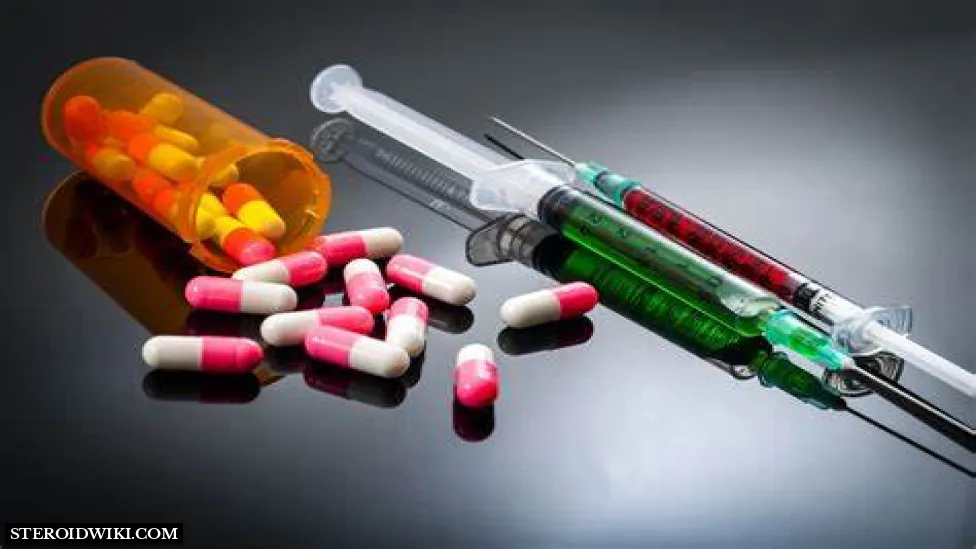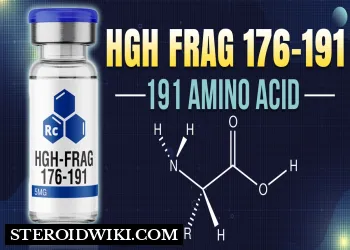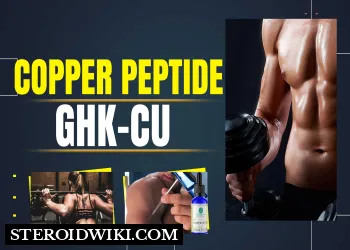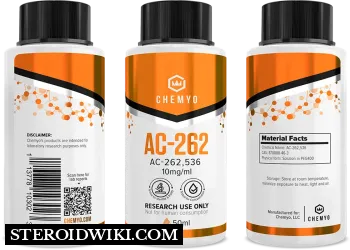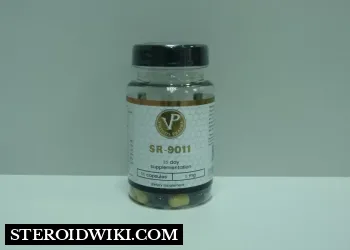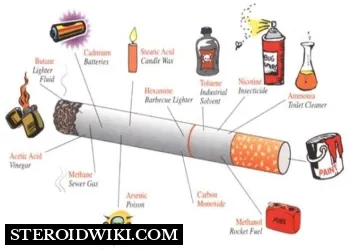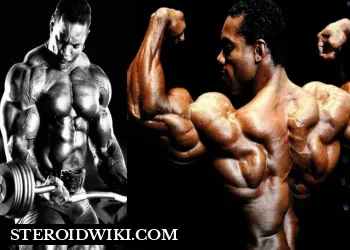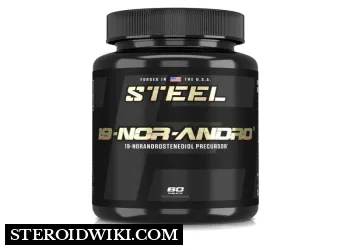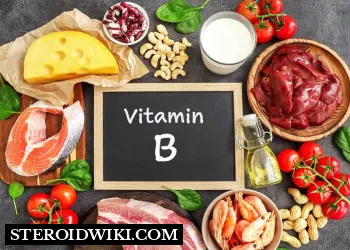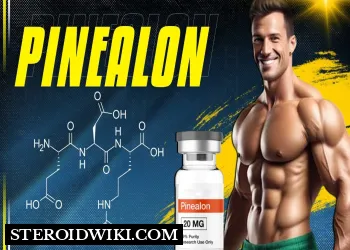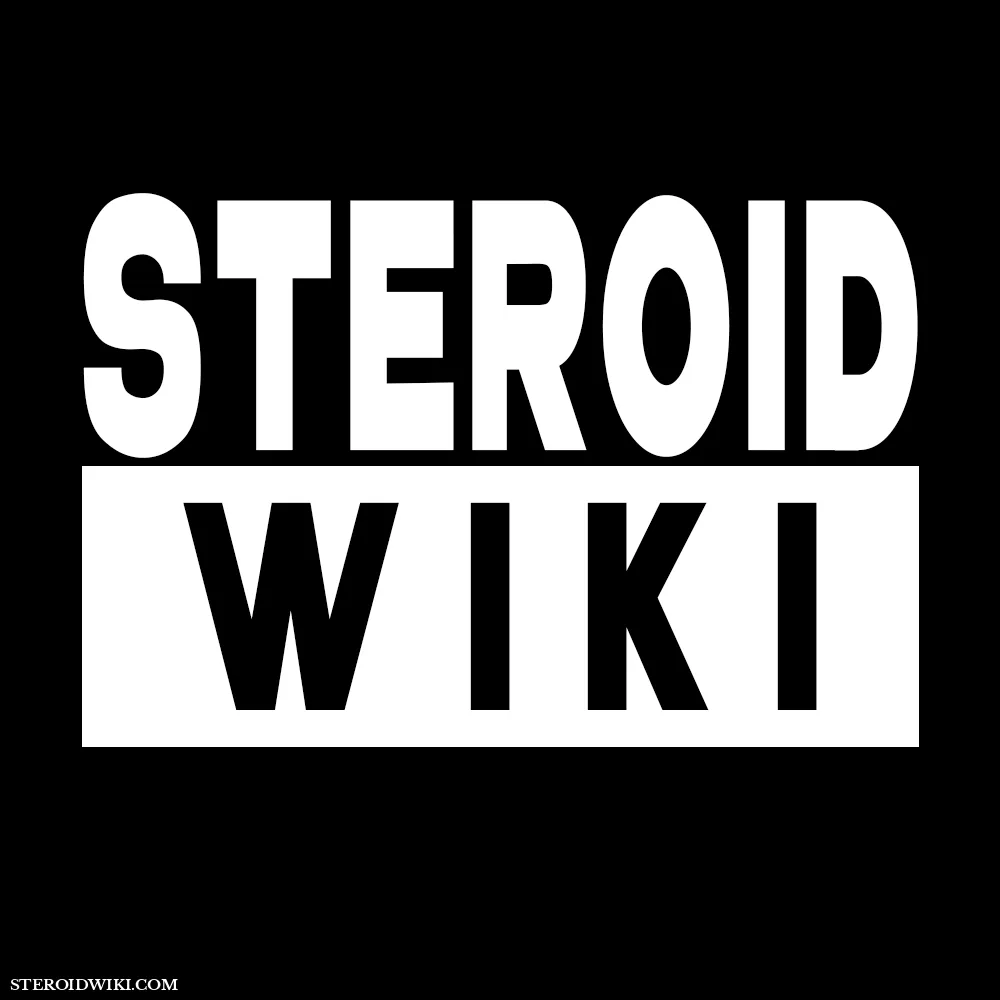SARMs vs Peptides vs Steroids vs HGH
Table of Content:
- What are SARMs?
- What are peptides?
- SARMs and Peptides: Similarities
- SARMs and Peptides: Difference
- SARMs Are Not Steroids Molecules
- Pros of SARMS and Peptides
- Conclusion
- What Are Steroids?
- What Is HGH?
- Differences in structure
- What Are the Differences Between Steroids and HGH
- Why Are HGH and Steroids Often Confused
- The Dangers of Unprescribed HGH and Steroids
- Growth Hormone vs. Steroids: Which is better and strongest?
- Pros and cons of steroids and HGH
- Summary
What are SARMs?
SARMs are a class of ligands that is an androgen receptor that binds to androgen receptors. Their initial purpose was bone regeneration. However, as a fast-acting performance enhancer, it demonstrated effects on fat-burning and muscle growth. As a result, SARMs became an effective alternative to anabolic steroids. Additionally, SARMs may produce an effect comparable to that of testosterone, albeit with fewer adverse effects than testosterone. SARMs, on the other hand, have a different structure than testosterone.
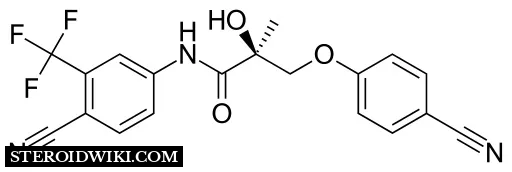
SARMs' ability to selectively target various tissues is one of their most important characteristics. That entails; Some SARMs are made to build muscle, while others are made to get rid of body fat. RAD 140, Ostarine, LGD 4033, Andarine, BMS-564,929, and so on are all examples of SARMs.
What are Peptides?
Bodybuilding supplements known as peptides are made up of polypeptide chains with less than fifty amino acids. Polypeptides are amino acid chains that have between 10 and 100 amino acids, whereas proteins are polypeptides that contain more than 50 amino acids. Peptides, as an alternative to proteins and creatine, are superior for developing muscle. Additionally, peptides have shorter side effects than other steroids used for this reason.
Peptides also don't directly promote anabolism. They function as GH secretagogues and raise the secretion level of growth hormone.
There are two primary types of peptides in the synthetic form:
- Growth hormone-releasing hormone (GHRH)
- Growth hormone-releasing peptides (GHRP)
Numbness and tingling in the limbs, water retention, joint discomfort, carpal tunnel syndrome, and reduced glucose tolerance are other adverse effects of synthetic GHRH. Other GHRP adverse effects include increased gastrointestinal motility, increased appetite, and tiredness. Other peptides that are employed include MGF (Mechano Growth Factor), Myostatin, and HGH Fragment.
SARMs and Peptides: Similarities

- hey both are types of muscle-building agents.
- Both have fewer side effects on the building of muscle.
- They both have an indirect anabolic effect on bone and muscles.
- Most importantly, they both are legal to buy.
SARMs and Peptides: Difference
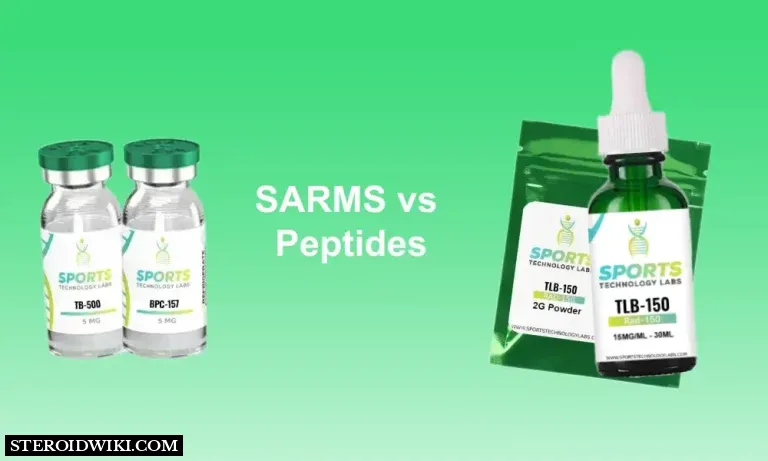
The difference in terms of Definition
Peptides are the natural or synthetic forms of polypeptide chains that contain less than fifty amino acids in the chain. It is used for fat-burning and building muscle.
SARMs contain properties similar to anabolic agents and are part of relaxing compounds but with reduced androgenic properties. This constitutes the main distinction between peptides and SARMs.
The difference in terms of Significance
SARMs are particular androgen ligand receptors, whereas peptides are polypeptide chains with fewer than 50 amino acids.
The difference in terms of Natural or Synthetic
Peptides can be either natural or synthetic, whereas SARMs are synthetic.
The difference in terms of Functional Significance
Peptides promote the production of growth hormones, SARMs attach to the androgen receptors in the muscle and bones, promoting their development. So, this is how SARMs and peptides act differently.
The differences in terms of Selectivity
Unlike peptides, which have a relatively low selective impact on muscle construction, SARMs have a very specific impact on the development of bone and muscle. So, this is another distinction between peptides and SARMs.
The difference in terms of Alternatives
Peptides beat protein powder and creatine, whereas SARMs outperform anabolic steroids.
SARMs Are Not Steroids Molecules
Most androgenic hormones are steroid-based molecules. This means they are based on cholesterol and fall into a category separate from peptide hormones. Steroid hormones are fat soluble and include things like vitamin D, estrogen, and testosterone.
Most SARMs, unlike their natural androgen receptor binding counterparts, are not steroid-based. The majority are small molecules based on aryl-propionamide or tricyclic quinolones. Most of these have failed at the level of clinical trials, however, due to toxicity or lack of selectivity. All steroids share the same basic four-ring structure, which is not a feature of most SARMs. The various effects of steroid hormones, from testosterone to estrogen, are a result of modifying this basic ring structure, which is shared with cholesterol.
Pros of SARMS and Peptides
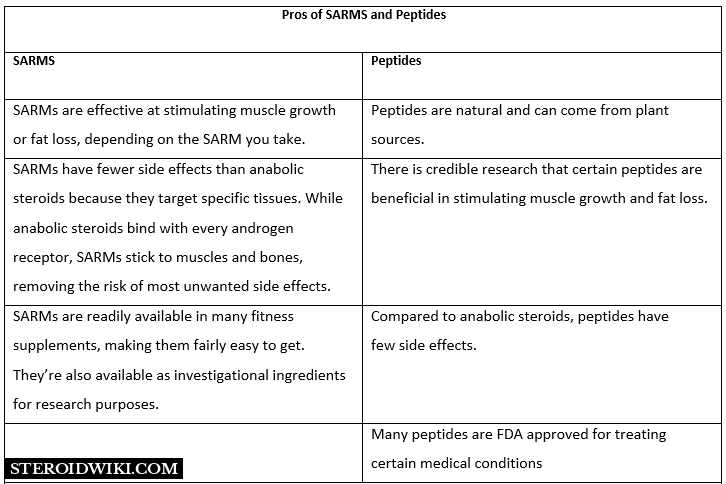
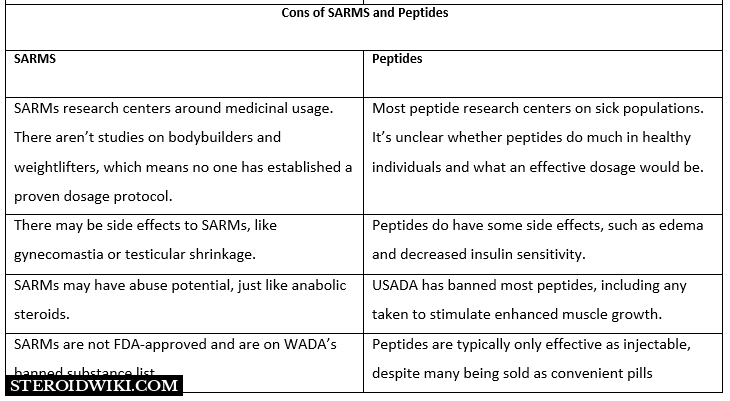
Conclusion
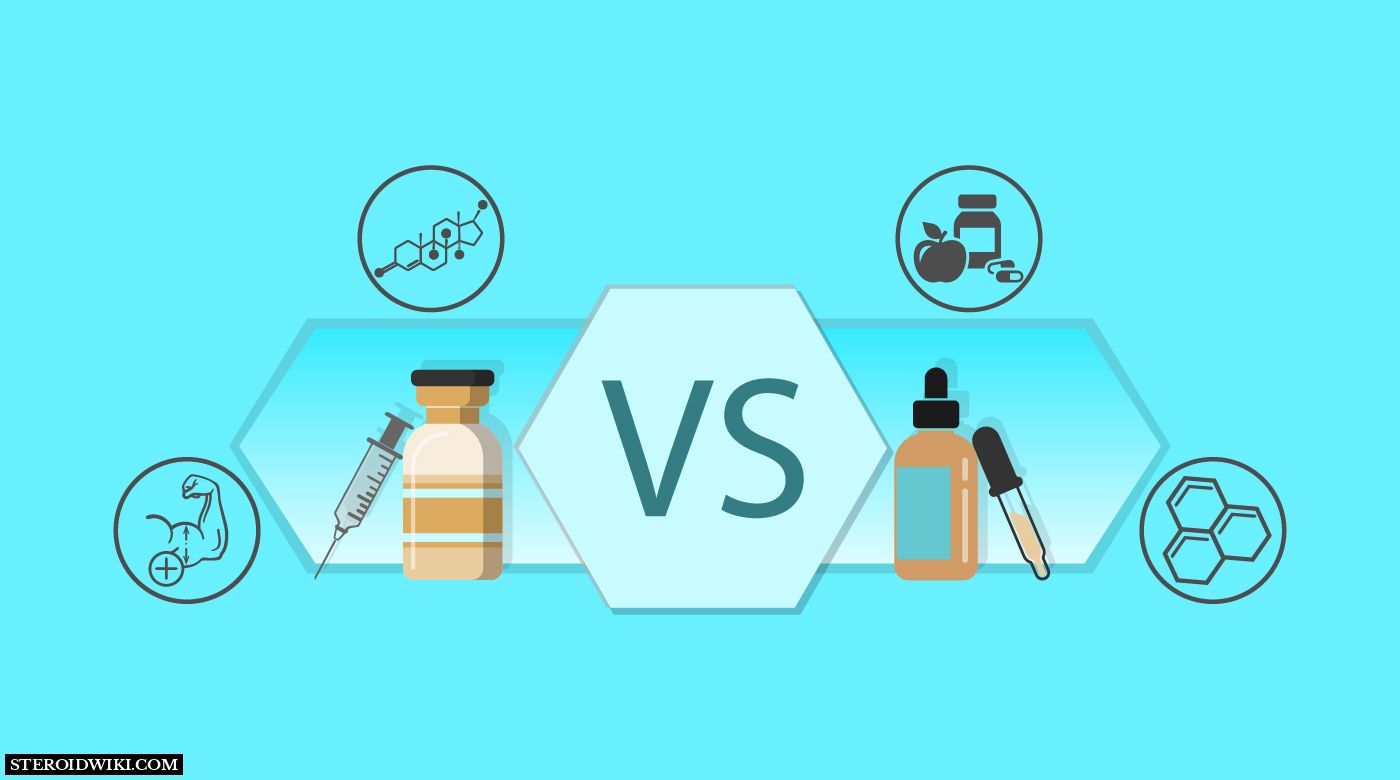
SARMs are a class of ligands that bind only to androgen receptors found in the muscles and bone. They make an excellent substitute for anabolic steroids. Peptides, on the other hand, are polypeptides with a chain of amino acids smaller than 50. They are quickly absorbed and cause the body to produce more growth hormones. Peptides are often an effective substitute for creatine and protein powders.
Consequently, increasing bone and muscle mass may be accomplished with both SARMs and peptides. SARMs and peptides differ primarily in their mode of action and selectivity. The primary distinction between SARMs and peptides is that. In contrast, peptides are dietary supplements that stimulate the body's growth hormone release. SARMs are a class of androgen receptor ligands that aid muscle development by binding to androgen receptors. Additionally, SARMs have a more focused effect on muscle growth than peptides, which have a less focused effect. Peptides and SARMs, or selective androgen receptor modulators, are two substances that can be used to boost bone and muscle growth.
Let's talk about steroids and HGH. What is the difference between steroids and HGH? This article will explore all the necessary and relevant information about steroids and HGH and their differences.
HGH VS Steroids: What is the difference?
What Are Steroids?
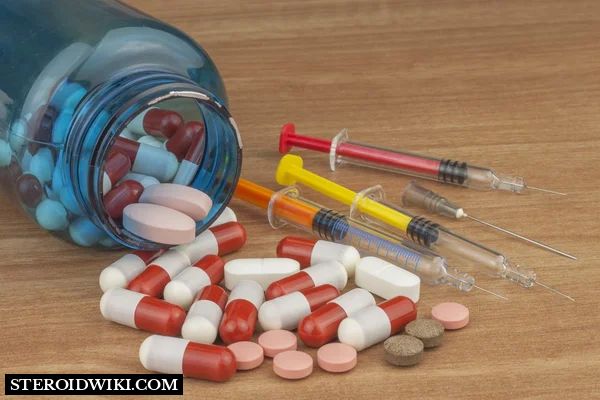
Steroids are artificial chemicals that replicate hormones naturally produced in our bodies. Most steroids are very similar to testosterone. They stimulate our muscle fibers to grow. It's critical to comprehend how different steroid varieties differ from one another. The two most widely utilized steroid kinds are:
- Corticosteroids: These recognized and legal medications are commonly used in therapeutic settings to reduce swelling and inflammation. They function by using their strong immunomodulatory abilities to reduce the ongoing inflammation that characterizes various autoimmune diseases, including inflammatory bowel disease (IBD), multiple sclerosis, and others.
- Anabolic steroids: A type of steroid used in medicine to repair body tissues and increase appetite and muscle growth. These substances were made popular by early bodybuilding pioneers like Arnold Schwarzenegger, Ronnie Coleman, and others.
Corticosteroids are lawful with a prescription, but anabolic steroids are completely banned and have no approved medical applications.
What Is HGH?
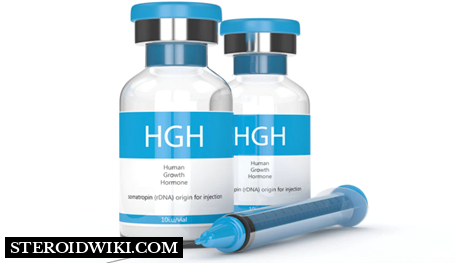
HGH is a naturally occurring compound produced in the body. The pituitary gland in the brain produces it. The primary purpose of HGH is to increase growth in children and adolescents.
Pulsatile discharges of HGH are primarily secreted at night when people are sleeping. Growth hormone is essential for optimum health throughout the lifetime, even in adults, even though it may be most commonly identified with its growth-stimulating role in children. Several crucial growth-related processes are regulated by HGH, which frequently cooperates with the hormone-insulin-like growth factor 1 (IGF-1) generated by the liver.
Growth hormone levels might decrease because of
- The pituitary gland is underactive because of poor eating habits and lifestyle choices. Relevant elements such as diets high in processed foods, inadequate sleep, and inactivity have been demonstrated to lower HGH levels, frequently noticeably enough to result in a diagnosable shortage.
- Cancerous development in or around the gland impacts the pituitary gland's capacity to create and release HGH.
- The pituitary gland's ability to release HGH into the bloodstream is hampered by inadequate blood flow to the gland.
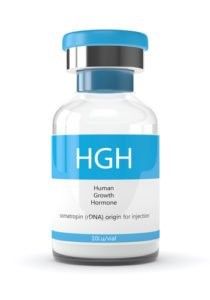
Supplementation with synthetic recombinant human growth hormone (HGH), also known as somatropin, is frequently advised to treat afflicted persons' imbalances depending on the causes of their HGH deficit.
Differences in structure
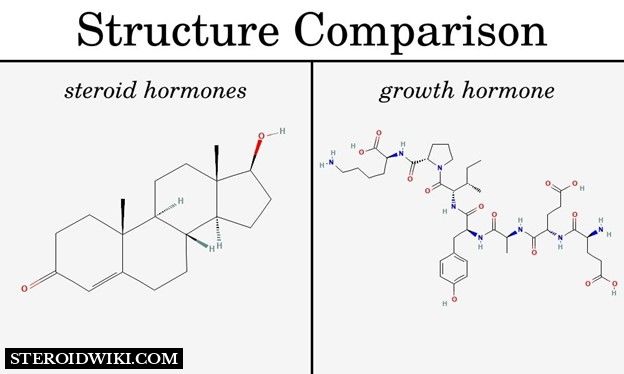
One hundred ninety-one amino acids comprise the single polypeptide chain that makes up HGH. As a result, the growth hormone is categorized as a peptide and has no relation to steroids while having a protein structure.
Steroid hormones, in contrast, have a characteristic molecular structure of 4 rings with 17 carbon atoms. Since all steroid hormones are made from this structure, it is like the structure of cholesterol.
Testosterone and dihydrotestosterone (DHT) steroid hormones are similar to anabolic steroids. Although they lack the anabolic properties of androgens, cortisol, aldosterone, and other sex hormones are classified as steroids.
What Are the Differences Between Steroids and HGH?
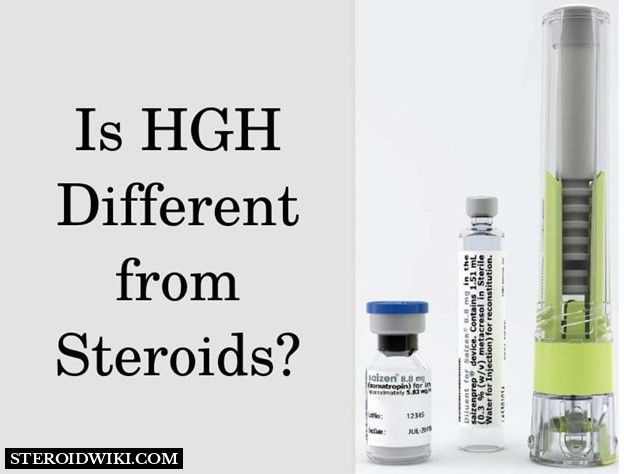
First, when prescribed by a qualified medical professional who has given a patient a prescription, somatropin (HGH) drugs are acceptable to own and use. Purely unlawful in all situations is the use of anabolic steroids.
Second, even though these hormones are engaged in the development process, their physiological effects differ greatly.
Why Are HGH and Steroids Often Confused?
HGH and steroids are frequently misconstrued for a variety of reasons. The following are some probable explanations for why someone could confuse one for the other:
- Both are anabolic, meaning they contribute to muscle growth in various ways and have various adverse effects.
- Injections are typically used to provide both HGH and steroids, a delivery mechanism frequently connected in the public's mind with synthetic performance-enhancing substances.
- Athletes frequently abuse both to gain from their performance-enhancing effects.
The Dangers of Unprescribed HGH and Steroids

Many are vulnerable to adulteration or manipulation because steroids may only be purchased on the underground market. According to WHO research, one in ten medical supplies imported from the Third World, a significant source of illicit steroids in the US, are either fake or fall short of the quality requirements for pharmaceutical-grade goods like FDA-approved HGH.
Continuous examination by a skilled endocrinologist is crucial to the therapy that protects the patient's health while delivering HGH or any other hormone.
HGH replacement treatment can be carried out under such expert supervision, but because steroids are illegal, it is hard to monitor the health of those who use them.
Growth Hormone vs. Steroids: Which is better and strongest?
The use of anabolic steroids is forbidden by law in any circumstances. Anabolic steroid usage has no recognized medical benefit, and those who take these drugs outside the law or practitioners who give unethical prescriptions to their patients risk severe legal repercussions. Additionally, abusing illicit steroids has several harmful effects on one's health, many of which are typically permanent, many of which we have covered.
On the other hand, HGH replacement therapy is a well-accepted medical procedure that provides a variety of advantages to individuals with identified HGH shortages, including improved sports performance.
Pros and cons of steroids and HGH
Pros of Steroid and HGH
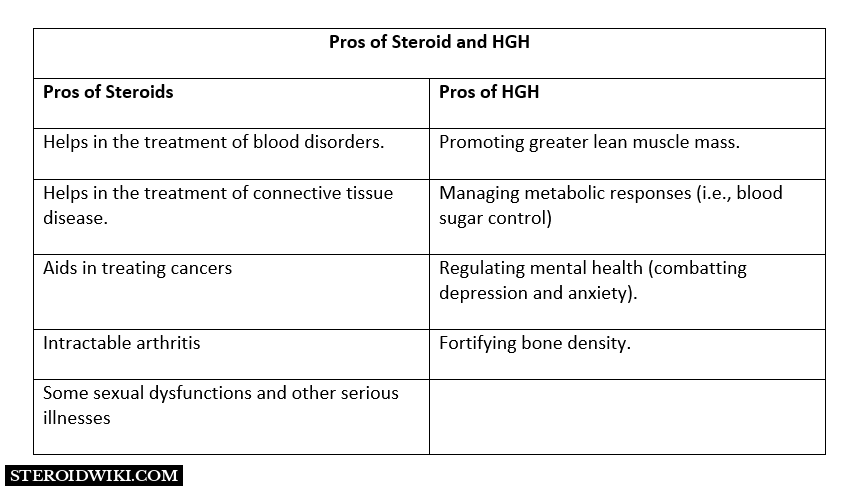
Cons of Steroid and HGH
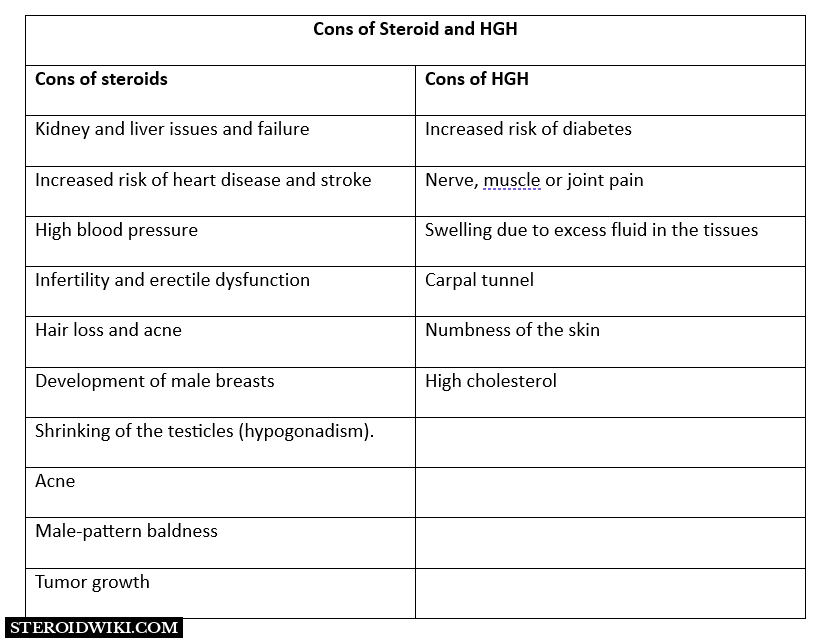
Summary
HGH vs. Steroids
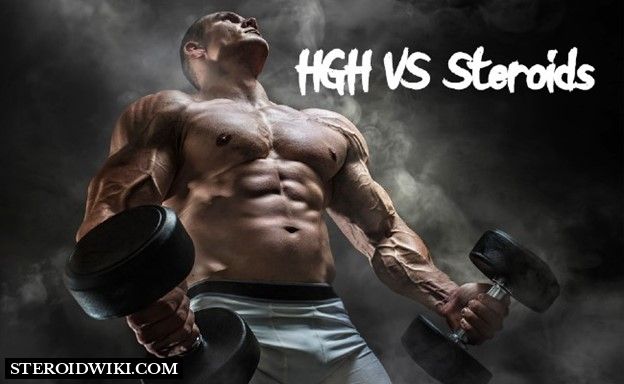
Steroids are chemicals that closely resemble the male testosterone hormone. It is used to treat several medical conditions but is not allowed by children. Even with doctors' prescriptions, steroids are not permitted in children. In adults, it is also banned or prohibited. They can use it with prescriptions depending on the condition and usage, but it is prohibited without a prescription.
There are two major classifications of steroids.
Anabolic steroids encourage skeletal muscle growth, and androgenic steroids that increase the development of male sexual traits. Corticosteroids are the chemical compounds used in medicine to treat inflammation.
Human growth hormones, or HGH, are hormones the body produces to aid development and growth. Although both are sometimes wrongly considered as same and comparable, the only thing that unites them is that they are both growth hormones. Anabolic steroids can increase muscle mass, performance, and attractiveness. The steroid's effects help the body retain protein essential for developing skin, bone, and muscles. Though the effects of steroids are quite alluring, it's important to keep in mind that they might have negative side effects considering how frequently sportsmen abuse them. Steroids can have a wide range of unfavorable side effects, while HGH virtually never does, and even the ones it does have can be easily handled. HGH is easily absorbed as a supplement and doesn't need to be injected like drugs
Since there is less chance of illness spreading through tainted needles, HG becomes more alluring. The price of HGH supplements is also considerably lower than that of steroids. Since HGH is not addictive like steroids, cravings or withdrawal issues are impossible. In addition to helping you gain muscle, HGH is also believed to help you age more slowly, have more energy, and be stronger overall.
When taken excessively, steroids can have significant and occasionally lasting negative effects. These include impotence, breast growth, enlarged testicles, and trouble peeing in males. In addition, men may experience lower sperm count, which may occasionally be permanent. Women may have changes in their menstrual cycles, facial hair growth, voice deepening, and breast enlargement. Acne, weight gain, bloating, heart attacks, strokes, weakening tendons, and sleep issues are unfavorable side effects for both sexes.
For more information on SARMs profiles, Peptides, and Steriods profiles, visit steroidwiki.

